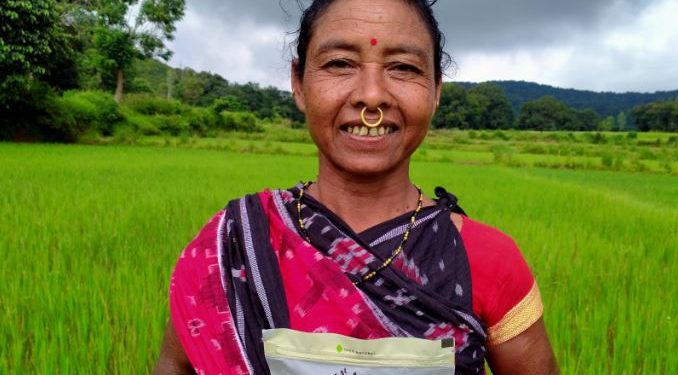Koraput: Odisha’s near-extinct Kala Jeera rice is making a comeback, thanks to the tribal women who are cultivating and marketing it to the outside world from Machhara village in Koraput district with the help of MS Swaminathan Research Foundation (MSSRF), Jeypore, and Odisha Rural Development and Marketing Society (ORMAS).
Researchers had warned that Kala Jeera rice would gradually vanish in 12 years, but the village women brought about the much-needed change. In fact, the seeds sowed by them also reaped the fruits of financial freedom. Eight years on, over 100 women farmers in Machhara and nearby villages are now involved in Kala Jeera rice production. They have formed a collective ‘Sabari Producer Group’ which not only cultivates rice but also collects, processes, brands and sells it on the e-commerce platform Amazon.
Apart from Machhara, the group purchases Kala Jeera rice from farmers of over 10 nearby villages, including Mandia, Bajra, Suan, Dangarrani, Sukriguda, Bodapadar, Podeiguda and Mendhaguda. “Most people in our village belong to Paraja, Godaba and Bhumiyan tribal communities. Traditionally, we cultivate rice to feed our families. We also worked under the MGNREGA scheme.
Even then, we could barely manage to keep ourselves alive,” said Machhara-based Chitta Chendia, who now has three acres under Kala Jeera rice cultivation. She says adopting Kala Jeera variety has enhanced her source of income as it is priced at Rs 25 to 30 per kg in the market against the Rs 15 of a basic paddy variety. According to Daimati Chendy, not everyone was involved in farming Kala Jeera rice initially.
But on realising the demand for the product on Amazon, many women joined the initiative. “Even landless women now take up cultivation on leased plots,” Chendy says. Sita Jani of Machhara expanded her Kala Jeera cultivation by getting another plot on lease, apart from utilising her small piece of land. Seeds are available easily and at affordable prices, and there is no struggle to sell the produce either, she says.
Traditional farming practices are employed in Kala Jeera rice cultivation, which is fully organic. “Instead of chemical fertilisers, we make organic manure using readily available components such as cow urine and leaves of neem, papaya and pomegranate, among others,” explains Jani.
Additionally, the researchers at the MSSRF have trained the villagers of Koraput district to enhance productivity while staying true to traditional methods. According to Surajita Turuk, the MSSRF field officer and officer-in-charge of Machhara village, traditional fertilisers and seed purification methods used by tribals for generations are the easiest ways to ensure organic farming. “We have branded them as ‘Jibamruta’ and ‘Bijamruta’.” “Seeds for the seed bank are collected from relatives and surrounding villagers, and then distributed among beneficiary farmers. We have a special committee for the seed bank,” Haribola Pitia explains. Anyone who gets seeds from the bank has to return more seeds than they have taken. This is the rule, though it varies from village to village. “In Machhara, if someone takes 10 kg of seed, she has to return 12 to 13 kg. In Kundra, you have to return 14 kg for every 10 kg taken,” informs Pitia.






































